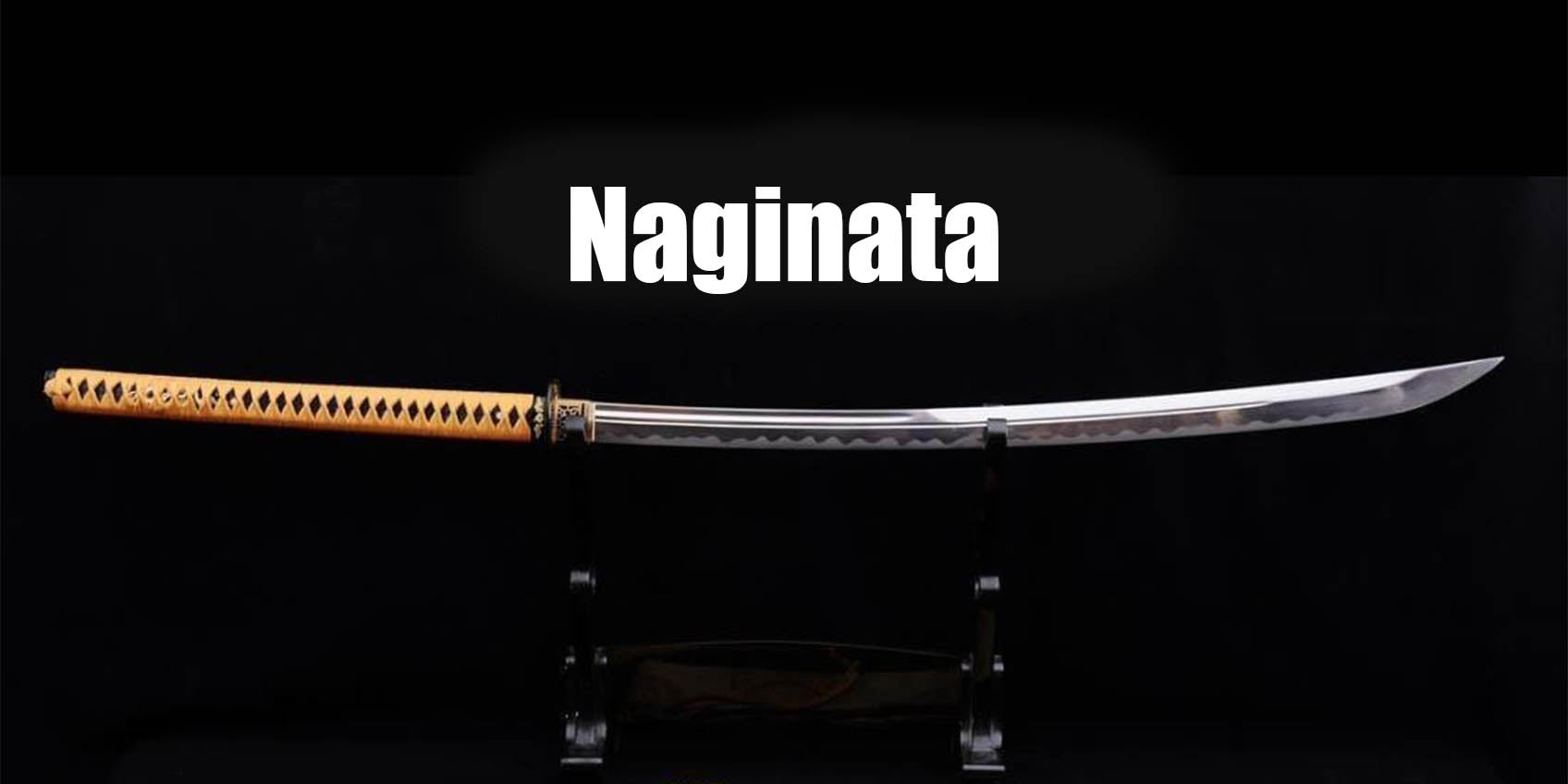How to Use a Katana Sword : Naginata Techniques & Training Basics

Among the many Japanese blade weapons, the katana is widely recognized as one of the most iconic cold weapons. To properly master how to use a katana sword, it is essential not only to learn its techniques but also to understand its structure, variations, and historical background. This article provides a comprehensive introduction to katana styles, parts of a katana, katana sword types, and other Japanese weapons like the naginata, helping you gain deeper insight into the world of Japanese swords.
What Swords Did Samurai Use?
From the Sengoku to Edo period in Japan, the samurai class was not only an elite fighting force but also a cultural symbol carrying the spirit of Bushido. To adapt to different combat situations and formal occasions, traditional samurai usually carried three types of blades, collectively known as what are the 3 samurai swords called:
-
Katana: The main battle weapon of the samurai, typically 60–80 cm in length with a noticeable curve. Ideal for fast-draw slashes, the katana represents the pinnacle of Japanese sword-making, balancing sharpness and toughness. It is the weapon of choice for close combat and symbolizes the samurai’s dignity and status.
-
Wakizashi: About 30–60 cm long, often paired with the katana, collectively known as the 'Daisho' (big and small swords). The wakizashi was used in close quarters and played an important role in performing seppuku, bearing strong spiritual meaning.
-
Tanto: A short blade under 30 cm, similar to a dagger. Often used in indoor combat, self-defense, or assassination. Noblewomen and bodyguards frequently carried tantos for emergencies. Female warriors sometimes wore them for protection.
These three swords, collectively referred to as the Three Samurai Swords, reflect functional design, social hierarchy, and ceremonial spirit in Japanese sword culture. When worn, the katana is placed on the outer side of the belt, while the wakizashi or tanto is worn on the inside for quick draw. Possessing these three blades was regarded as a symbol of samurai identity and honor.
Types of Samurai Sword / Katana Sword Types
The samurai sword is not a fixed design but includes many types of katanas and evolved forms. Common classifications include:
-
Uchigatana: The most typical katana style, suitable for wearing and fast-draw techniques.
-
Tachi: An earlier form of samurai sword, worn edge-down and suited for cavalry combat.
-
Hishizukuri Uchigatana: A rare but unique katana blade type with a diamond-shaped cross-section.
-
Chokuto: A straight blade from ancient times, an early form in Japanese sword evolution.
Different blades served different battlefield needs, resulting in a rich variety of different katanas and katana styles.
Samurai Sword Name / Katana Names / Katana Nicknames
Every true samurai sword carries a unique samurai sword name, reflecting the swordsmith’s style and its historical story. For example:
-
'Muramasa': Known for its legend as a cursed sword.
-
'Masamune': Famous for its sharpness and spiritual purity.
-
'Kotetsu': Said to have been used by Kondō Isami.
Many swords also have unique katana nicknames, such as “Iron-Cutting Blade” or “Wind Cutter,” describing their power or symbolic meaning.
Female Naginata / Japanese Glaive: A Weapon for Female Samurai
When discussing different kinds of katanas, one must not ignore the naginata, a traditional long pole weapon widely used in both battle and training. During the Edo period, the naginata became a symbol for female samurai (Onna-Bugeisha) and is often referred to as the female naginata.
-
The naginata, classified among Japanese blade weapons, is a polearm with a long wooden shaft and a curved blade. It allows for both slashing and thrusting attacks. Compared to typical katana styles, its advantage lies in extended reach and stronger defense.
-
In real combat, naginata vs other weapons highlights its superior range, making it effective against cavalry, short-blade users, or group attacks. While it may not be as suitable for close-range assault as a hishizukuri uchigatana, its tactical value is immense.
-
Today, the naginata is still used in traditional martial arts and ceremonial training. Many dojos and cultural schools offer specialized classes. For beginners and enthusiasts, buying a wooden naginata for sale is a great way to start—it’s safe and maintains authentic proportions.
-
Notably, the naginata represents both the extension and evolution of the samurai blade, enriching the diversity of katana sword types. It is an indispensable part of any study into the types of samurai sword.
Whether as a symbol of female samurai or a tactical asset in cold-weapon warfare, the naginata has earned its title as the 'King of Reach Control.'
Hand Forged Japanese Naginata Sword 1095 Carbon Steel Rayskin Saya
Parts of a Katana
Before truly understanding how to use a katana sword, it’s crucial to learn its structure. A katana is not only a weapon but a reflection of Japanese craftsmanship and aesthetics. The classic samurai blade is composed of the following main parts:
-
Tsuka (hilt/handle): Typically a wooden core wrapped in samegawa (ray skin), then bound with tsuka-ito (handle cord) for better grip. The handle is capped with fittings like fuchi and kashira for decoration and balance.
-
Tsuba (guard): Prevents the hand from sliding onto the blade and serves as decoration. Tsuba come in various designs, from minimal geometric shapes to ornate carvings. Many katana nicknames derive from their unique tsuba.
-
Saya (scabbard): Made of wood and lacquered to resist moisture and cracks. The saya protects the katana blade types and aids in smooth drawing during martial arts such as Iaido.
-
Hamon: The blade pattern formed by clay tempering, appearing in forms like straight lines, waves, or thunder shapes. It reflects the sword’s hardness and toughness and gives each sword a unique character.
-
Nakago (tang): The hidden part of the blade inserted into the handle and fixed with bamboo pegs. It’s vital for connecting the blade to the hilt. Master swordsmiths often engrave their name and the forging date on the nakago, making it an important marker of authenticity.
-
Kissaki (tip): The tip of the blade, precisely shaped to determine stabbing efficiency and visual beauty. Different katana styles may feature varying kissaki designs.
These intricate parts of a katana give each sword its practical and artistic value. Whether studying different kinds of katanas, collecting, or using them, a deep understanding of their structure is essential to appreciating their unique charm.
How Much Does a Katana Weigh?
Generally, a standard katana weighs around 1.1 to 1.5 kg (2.4 to 3.3 lbs). Its balanced weight distribution makes it ideal for fast drawing and slashing. Some heavy-blade or customized versions may weigh more, used for wrist training.
How Are Katanas Made?
A high-quality katana sword is more than a weapon—it embodies the spirit of craftsmanship and the essence of Japanese sword culture. The traditional forging process is intricate and precise, showing reverence for the 'soul of the samurai.' Below is the typical production process for types of samurai sword:









